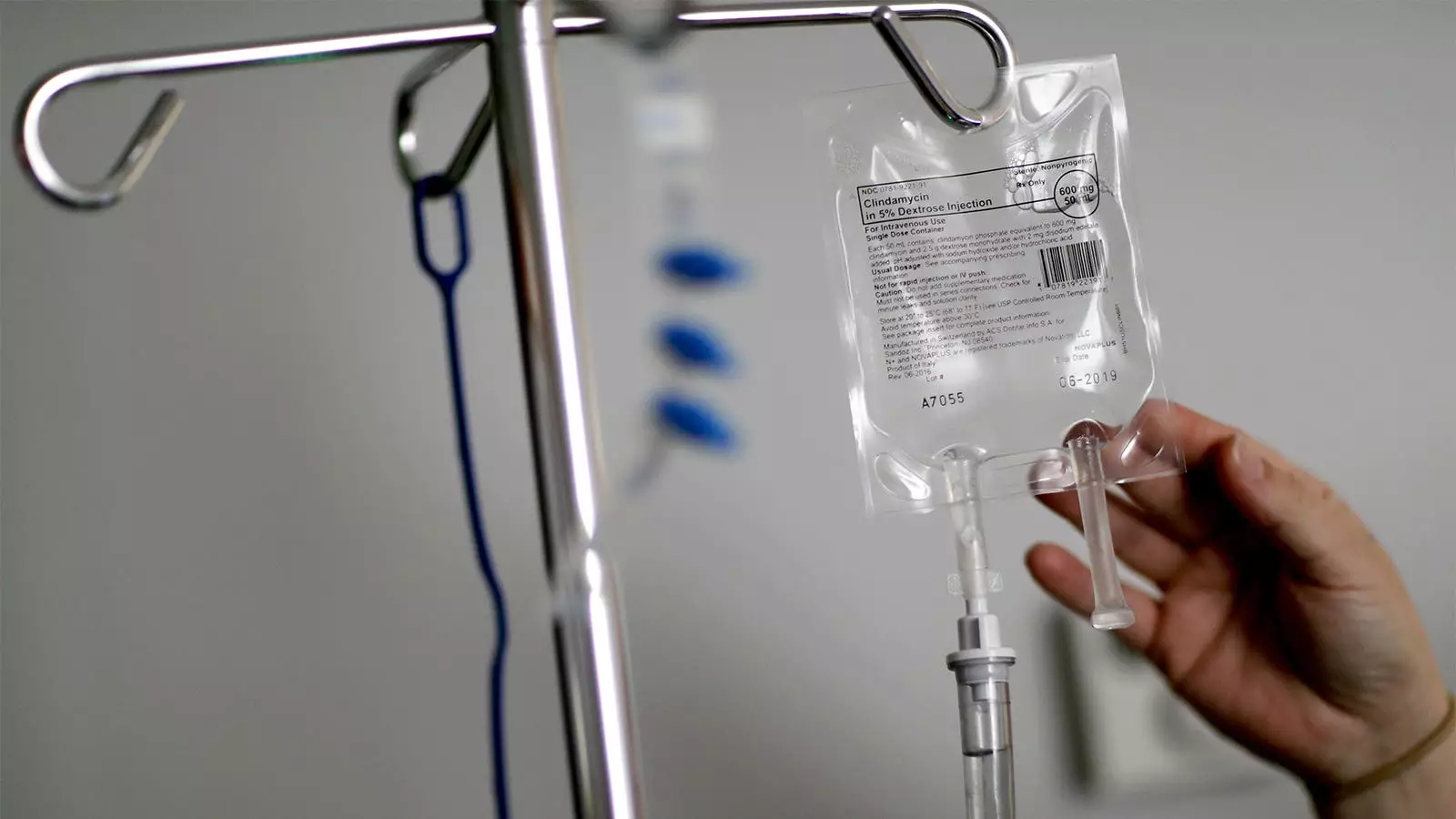The looming arrival of Hurricane Milton has sent ripples of concern through the healthcare sector, particularly for hospitals already grappling with critical shortages of intravenous (IV) supplies. Federal officials are proactively mobilizing resources to protect crucial medical supplies, especially IV fluids, as the storm approaches. This comes in the wake of significant disruption caused by flooding at Baxter International’s factory in North Carolina, which had previously been a dominant supplier of sterile IV fluids in the United States.
The delicate nature of healthcare logistics becomes alarmingly clear during these emergency situations. As hospitals across the nation depend on millions of IV bags every day for patient hydration and medicinal delivery, the news of another potential disruption triggered by Hurricane Milton has escalated anxiety levels among healthcare providers. This scenario underscores the fragility of the supply chain and the concerted efforts needed to mitigate potential crises.
In a proactive move, B. Braun Medical, a vital player in the IV fluid market, has engaged U.S. health authorities to secure its inventory ahead of the impending hurricane. With its manufacturing plant in Daytona Beach, Florida, temporarily closed due to the storm’s threat, the company’s spokesperson, Allison Longenhagen, conveyed optimism regarding resuming operations shortly after the hurricane passes.
B. Braun’s decision to relocate its inventory highlights the importance of crisis management within the pharmaceutical industry. Unlike Baxter, which faced severe disruption without warning, B. Braun’s preparedness may serve as a case study in effective contingency planning. Industry experts, such as Mike Ganio from the American Society of Health-System Pharmacists, have noted the crucial impact of foresight in these scenarios, suggesting that having a well-prepared response can significantly reduce the risk of further complications in securing critical medical supplies.
The recent challenges within the IV supply chain have prompted urgent requests from the American Hospital Association to the Biden administration. They are advocating for declared national emergencies to invoke Defense Production Act authorities, thereby compelling private manufacturers to prioritize IV production. Such decisive action is reminiscent of previous governmental endeavors during medical emergencies, particularly during the COVID-19 pandemic and the recent baby formula shortages.
Health Secretary Xavier Becerra’s communications with health professionals echo a commitment to addressing the ongoing supply chain disruptions. Nonetheless, his correspondence refrained from detailing specific emergency powers that could be activated. Rather, the Department of Health and Human Services is reportedly exploring a range of strategies, including the potential for temporary foreign imports and extending expiration dates on existing IV products to alleviate the immediate pressures faced by hospitals.
Even before the arrival of Hurricane Helene, which not only caused widespread damage but also exacerbated existing shortages in IV supplies, the U.S. Food and Drug Administration had identified several IV fluids, including saline solutions, on its drug shortage list. This pre-existing vulnerability emphasizes the necessity for hospitals and specialty pharmacies to adapt by compounding their own formulations in response to scarcity.
The compounding measures serve as a stopgap solution, showcasing the adaptability of healthcare providers in the face of systemic shortages. However, these workarounds often come with their own set of challenges, primarily concerning safety and effectiveness, which underscores the need for a robust and reliable supply chain.
As the nation braces for the impacts of Hurricane Milton, the unfolding situation serves as a reminder of the systemic vulnerabilities within the supply chain for critical healthcare resources. The collaboration between governmental agencies and industry players will be pivotal in overcoming these challenges. Ensuring an uninterrupted supply of IV fluids is not just a logistical issue; it is a matter of patient safety and healthcare efficacy.
Heightened attention to potential threats, robust contingency planning, and multi-faceted government intervention will be essential to fortifying the IV supply chain against future disruptions. As we navigate these turbulent waters, the commitment to safeguarding healthcare supplies remains more pronounced than ever. The ability to learn from past disruptions and implement strategic responses will determine the resilience of our healthcare system in the face of inevitable challenges.


Leave a Reply